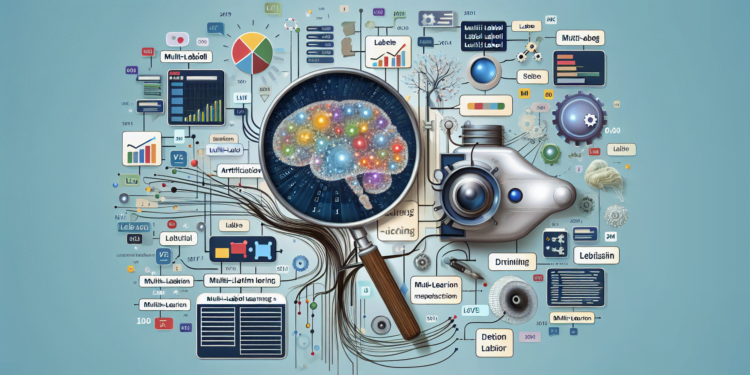Multi-label Learning (MLL) is an advanced subdiscipline of artificial intelligence that focuses on the task of simultaneously assigning multiple labels to a single instance. Unlike traditional multi-class learning, where an object is associated with one category, MLL can capture the more complex and less mutually exclusive nature of real-world phenomena. This approach is essential in areas where objects can belong to multiple classes, such as genomics, natural language processing, and text classification.
Theoretical Advances in Multi-label Learning
The Rank Loss function has been a cornerstone in this field, pushing the boundaries of how machines understand and categorize inputs with multiple labels. This approach focuses on minimizing the difference between the order of the predicted labels and the true labels, often requiring advanced optimization algorithms. Recently, significant strides have been made in the development of more effective loss functions, such as Label Ranking Average Precision (LRAP), which offers a performance measure that approximates the area under the ROC curve in multi-label contexts.
In the depths of neural networks, Deep Multi-label Learning is a burgeoning territory. Convolutional (CNN) and recurrent (RNN) neural network architectures have been adapted for MLL, harnessing their ability to capture complex patterns and learn high-level data representations. Graph Neural Networks (GNN), which model relationships between labels, have also shown great potential.
Innovations in Algorithms
The Binary Relevance (BR) label transformation algorithm has been ousted by more sophisticated approaches. The BR method, which treats each label as a separate binary classification problem, has proven inadequate in capturing label dependencies. Alternatives like the Classifier Chain (CC) method present a sequence of binary classifiers, each learning from the information of the previously predicted labels, thereby sequencing the original problem and allowing for an implicit encoding of interdependencies.
The recent Random k-Labelsets (RAkEL) breaks the original set of labels into random subsets, over which multi-class classifiers are built. By combining the predictions of multiple subset classifiers, this approach leads to improved performance, especially in terms of the variety of labels that can be predicted.
Emerging Practical Applications
In the field of image processing, the technique called Weakly Supervised Learning (WSL) has enabled the localization of objects in images even when the training set only provides image-level annotations, not precise locations. This is especially useful for multi-label learning, given that images commonly contain multiple objects of interest.
Furthermore, in the functional genomics area, MLL techniques are revolutionizing protein function prediction. By applying MLL to gene expression data, multiple biochemical functions can be simultaneously assigned to a protein, speeding up the understanding and classification of new protein compounds.
Comparison with Previous Work and Projection of Future Innovations
Against approaches that scatter their analysis among multiple models, Multi-label Attention Neural Networks (MLAN), inspired by the Transformer architecture, allow for the simultaneous focus on multiple relevant attributes of the input, differentiating contexts where labels interact with each other. This paradigm paves the way for extreme customization of classification tasks.
In the long term, the emergence of techniques that integrate generative and discriminative models even more closely in multi-label learning is anticipated, enhancing the machines’ ability to generate new instances (e.g., images, text) with multiple and varied attributes.
Exemplary Case Studies
The application of MLL in social media platforms for the automatic tagging of multimedia content illustrates its potential. Systems using Deep Learning with attention architectures have demonstrated improved relevance and accuracy in tagging on platforms like YouTube and Flickr, where multiple categories such as activities, objects, and scenes must be concurrently identified.
Another success story is seen in the identification of drug side effects through multi-label learning, where potential correlations among different effects can be effectively mapped, accelerating pharmacovigilance and responses to health crises.
Multi-label Learning not only advances in analytical and predictive powers but also invites a broader reflection on the multidimensional nature of many entities and phenomena, promoting a holistic and flexible approach to the pursuit of intelligent solutions in a world where categories are rarely exclusive or one-dimensional.






















